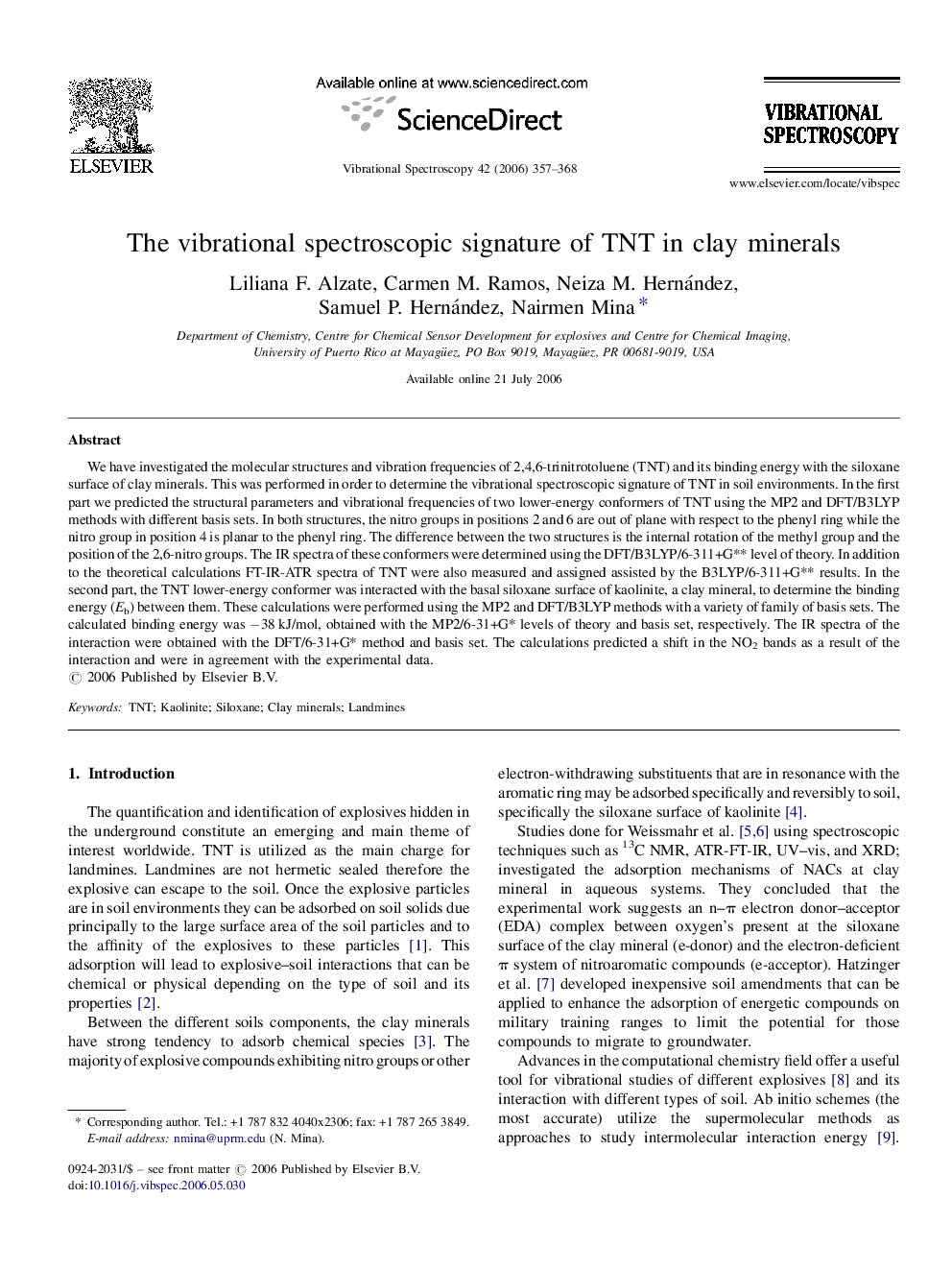| Article ID | Journal | Published Year | Pages | File Type |
|---|---|---|---|---|
| 1250092 | Vibrational Spectroscopy | 2006 | 12 Pages |
We have investigated the molecular structures and vibration frequencies of 2,4,6-trinitrotoluene (TNT) and its binding energy with the siloxane surface of clay minerals. This was performed in order to determine the vibrational spectroscopic signature of TNT in soil environments. In the first part we predicted the structural parameters and vibrational frequencies of two lower-energy conformers of TNT using the MP2 and DFT/B3LYP methods with different basis sets. In both structures, the nitro groups in positions 2 and 6 are out of plane with respect to the phenyl ring while the nitro group in position 4 is planar to the phenyl ring. The difference between the two structures is the internal rotation of the methyl group and the position of the 2,6-nitro groups. The IR spectra of these conformers were determined using the DFT/B3LYP/6-311+G** level of theory. In addition to the theoretical calculations FT-IR-ATR spectra of TNT were also measured and assigned assisted by the B3LYP/6-311+G** results. In the second part, the TNT lower-energy conformer was interacted with the basal siloxane surface of kaolinite, a clay mineral, to determine the binding energy (Eb) between them. These calculations were performed using the MP2 and DFT/B3LYP methods with a variety of family of basis sets. The calculated binding energy was −38 kJ/mol, obtained with the MP2/6-31+G* levels of theory and basis set, respectively. The IR spectra of the interaction were obtained with the DFT/6-31+G* method and basis set. The calculations predicted a shift in the NO2 bands as a result of the interaction and were in agreement with the experimental data.
